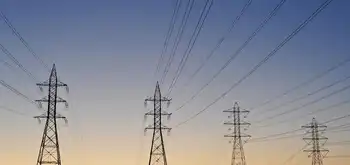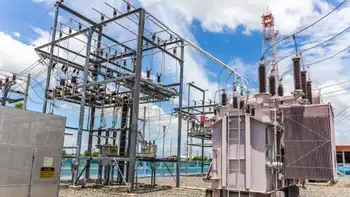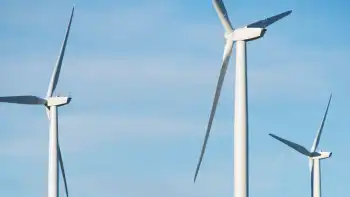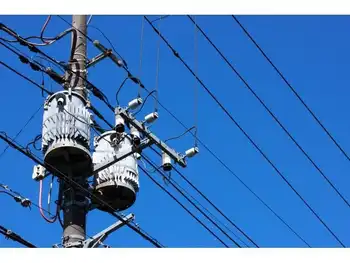Energy center has plan for Granholm ideas
MICHIGAN - Gov. Jennifer Granholm wants to spend millions of taxpayer dollars supporting research and development of alternative energy in Michigan.
Imad Mahawili has an idea of how she can do that.
The governor has proposed a $2 billion bond issue - needing voter approval - to provide research and development she hopes will create thousands of new jobs to tackle the state's high unemployment rate.
One of her three target areas for the research is alternative energy to reduce the state's and the nation's dependence on foreign oil, the governor said in her recent State of the State address.
Mahawili, executive director of the Grand Valley State University Michigan Alternative and Renewable Energy Center in Muskegon, says the governor might start by funding a "landfill gas" pipeline from Apple Avenue to Muskegon's redeveloping downtown for its energy needs.
The governor might think of the idea as a "two-fer," supporters say, as it not only furthers alternative energy development in Michigan but helps make Muskegon a technologically "cool city" - an earlier Granholm urban development initiative.
In any case, the GVSU energy center is expected to take on a higher profile after the governor put alternative energy on the state's economic development agenda.
Mahawili has suggested to the city of Muskegon and community leaders that landfill gases being created and currently "flared" off at the Muskegon County Landfill on the Egelston and Moorland townships border could be piped to downtown Muskegon. Instead of burning the landfill gases as waste, the methane could power a series of microturbines to produce electricity and heat for the emerging Muskegon downtown.
The GVSU energy center director's proposal challenges the environmental and energy vision of the Downtown Muskegon Development Corp. - a consortium of local non-profits which owns and is attempting to redevelop the 23-acre former Muskegon Mall site.
As much as funding, GVSU and downtown developers would need regulatory approval for the "distributive energy" proposal and allow the downtown energy system to connect to the state's electrical grid, according to those working on energy and environmental issues for the downtown.
"It's a wonderful concept," said Arn Boezaart, vice president of programing for the Community Foundation for Muskegon County -- which has led the Muskegon Downtown Development initiatives. "It has a great application for downtown Muskegon but the governor, Legislature and Public Service Commission must allow for new ways of doing business."
Mahawili estimates a methane gas pipeline approximately 12 miles from the county landfill on Apple Avenue to the downtown could be built for less than $1 million. Capstone Corp. microturbines producing 30-kilowatts for a residential or small-business use would cost approximately $30,000 a piece, according to Mahawili.
Mahawili suggests the landfill gas project would be an alternative and renewable energy project that could fit the governor's 21st Century Jobs Initiative.
"I think the governor's program is wonderful," Mahawili said. "It's visionary. Now we have been challenged. Citizens and entrepreneurs need to step up to the plate. We have to come up with the ideas now."
Muskegon city officials have received a memo from Mahawili on the downtown landfill gas concept but have not yet had the time to analyze the idea, according to Cathy Brubaker-Clarke, the city's economic and community development director.
"It is something that certainly needs to be discussed," Brubaker-Clarke said.
GVSU's own building has a stationary fuel cell and solar cells on the roof to make the center energy self-sufficient. However, fuel cells and solar cells found at the energy center are costly to install. Mahawili estimates a fuel cell costs $4,000 for installed kilowatt and solar cells $8,000.
However, a microturbine has an installed kilowatt cost of $1,000, which is comparable to the cost of a new coal-powered electrical power plant, he said.
A microturbine is a refrigerator-sized unit that can operate on natural gas or on other alternative fuels such as methane from landfills or farm waste digesters. Mahawili said microturbines operate quietly and produce little greenhouse gas that is found in traditional coal-fired power plants.
GVSU's energy center has received a $250,000 grant from the U.S. Department of Energy to study two microturbines. Mahiwili said the center will install one at the downtown energy center to study its application with a sidewalk "snow melt" system and the other eventually at the landfill site to study its application with "bio-gases."
The current landfill produces 600 cubic feet of "biogas" a minute and with a processing unit that volume could be reduced to 300 cubic feet of pure methane a minute. Such a continuous flow of methane gas would produce 1,280 kilowatts of power or fuel for approximately 42 30-kilowatt microturbines. One 30-kilowatt microturbine will power a small business or four to five standard households.
Related News

Brazilian electricity workers call for 72-hour strike
BRASILIA - Brazil's national electricity workers' collective (CNE) has called for a 72-hour strike to protest the privatization of state-run electric company Eletrobras and its subsidiaries.
The CNE, which gathers the electricity workers' confederation, federations, unions and associations, said the strike is to begin at Monday midnight (0300 GMT) and last through midnight Wednesday.
Workers are demanding the ouster of Eletrobras President Wilson Ferreira Jr., who they say is the leading promoter of the privatization move.
Some 24,000 workers are expected to take part in the strike. However, the CNE said it will not affect consumers by ensuring essential services.
#google#
Eletrobras accounts for 32 percent…




